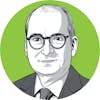 See
more of the story
See
more of the story
Denny Sanford's name is everywhere in Sioux Falls — his full name on the city's big sports arena, his last name on a smaller arena, an event barn, football fields and, of course, the giant medical complex in the heart of the city.
It has loomed like a specter in the Twin Cities for the last three months as the company his money helped build, Sanford Health, attempts for a second time to merge with Minneapolis-based Fairview Health — and by extension the University of Minnesota's medical system.
Sanford, 87, is a Minnesotan-turned-South Dakotan with a fortune estimated to be between $2 billion and $3 billion. Over the last 20 years, he's given nearly $1.5 billion to Sanford Health and, according to documents disclosed Monday, has pledged the bulk of his estate to the health system on his death.
It's an astounding act of generosity.
It means that Sanford will likely do more for Sanford Health, and for its patients in the Dakotas and Minnesota, after his death than he's done while alive.
And yet, it unnerves, even upsets, some people.
Sanford's record as a major Republican donor, his habit of stamping his name everywhere, his entire presence is enough for some in the Twin Cities to wish away Sanford Health.
"I try obviously, in my role, to not allow myself to get caught up in that," Bill Gassen, Sanford Health's CEO who is driving the merger effort, said.
"People have different perspectives on a variety of topics that are thrust into the political arena right now," he said. "And so with respect to Mr. Sanford, I still consider myself very blessed to be in an organization that he has chosen to support."
Sanford grew up in St. Paul, graduated from the U in 1958 and in the 1970s made a small fortune with construction and specialty chemicals businesses in the Twin Cities.
In the late 1980s, he bought a bank in South Dakota, renamed it First Premier and then took advantage of the state's usury laws to start a credit card business that included a line of subprime offerings. That's jargon for high-rate cards aimed at people who barely qualify for them.
Sanford Health and Fairview tried to merge in spring 2013, but they gave up after the state's then-attorney general asked some tough questions about Sanford's business, even though he had no operational role in the health system.
The Star Tribune at the time wrote a lengthy feature about Sanford's dealings in Sioux Falls. Today, after the Trump presidency and other business scandals of the last decade, it reads as a fairly mild indictment.
A decade earlier, he was known in the Twin Cities as a force in the U's effort to build a new football stadium. One attempt in early 2003 sputtered. In 2009, he donated millions of dollars to help build the stadium.
In the past couple of years, he made news for being under investigation on suspicion of possessing and distributing sexual content involving children. The South Dakota Attorney General's Office announced last May it determined there was nothing to prosecute within its jurisdiction.
Sanford is still chair of First Premier. My attempts to reach him through the bank over the past few weeks have failed.
It's possible to hold two thoughts about Sanford: that he made a lot money off people who were poor or in trouble and that he's done very good things with the money he's made.
"He truly gives as a philanthropist," Gassen said. "He never tries to dip his hand into how you should deliver care, what care should be delivered."
It's possible to hold two thoughts about philanthropy: that it's wonderful but also unfair.
It doesn't seem right that some people get outsized amounts of money, then get to decide what to do with it, reaping praise and exercising power along the way.
And yet, there's no efficiency or certainty of justice when government makes those choices either. Especially in places where resources are scarce, leaders pick winners and losers in a way that is similar to philanthropists telling some people "yes" and others "no."
Both Sanford Health and Fairview Health started as hospitals supported by Lutheran churches. They essentially remained that way until the 1980s and 1990s, when HMOs spawned for-profit hospital systems and the nonprofit ones started to combine to compete. Those deals keep rolling and have brought us to this potential combination.
Sanford's gifts put the former Sioux Valley Hospital of Sioux Falls in a better position to thrive in that environment. We'll soon see whether they have a positive or negative effect on what's now Sanford Health in its attempt to merge with Fairview.






